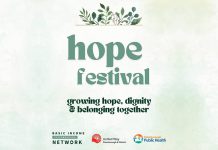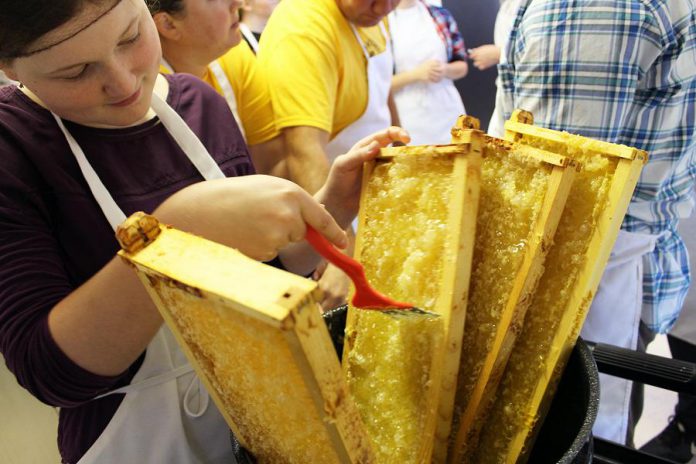
The mission of the GreenUP Community Beekeeping Program is to promote the awareness and appreciation of pollinators as a healthy part of our community through beekeeping, education, and advocacy. In total, GreenUP stewards five hives with a team of experienced beekeepers that have been buzzing about the hives located at Lock 20, the Peterborough Lift Lock, and Ecology Park.
In addition, this year GreenUP supported the Holy Cross Bee Club, who steward three hives at Holy Cross Catholic Secondary School in Peterborough. Starting earlier this spring, a group of 12 students — led by their teacher Mike Halloran — have been suiting up in protective bee suits, conducting hive checks, treating the hives for mites, and learning all there is to know about the honey bee life cycle.
Students in the Holy Cross Bee Club are members of the Eco Club who have a special interest in bee keeping. While all of the members of the club eagerly admit how fun the experience is, Emily Berardi also shares, “Understanding bees is really important because bees pollinate our crops and our gardens, and without them we wouldn’t have fresh vegetables and fruits to eat.”
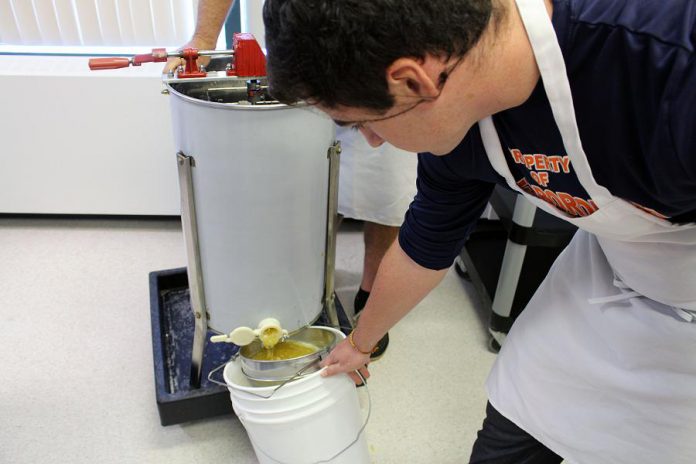
Beekeeping programs like this help to promote the awareness and appreciation of pollinators as a healthy part of our community through bee keeping education and advocacy.
Understanding honeybee life cycles and ecology is an important step in learning to coexist with critical pollinators, particularly in urban areas where there has been as much as 60 percent loss of bee populations.
“Stewarding the Lift Lock hives and helping with the Holy Cross Bee Club has given me the opportunity to talk to people, show them the hives, and help them understand the importance of bees, which will help bees recover from their losses,” says volunteer community beekeeper Quentin Day.
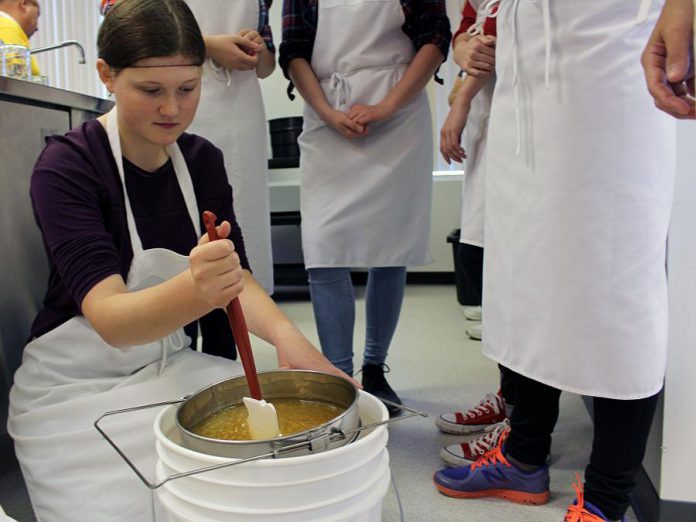
Holy Cross Bee Club member Jacob Duda agrees.
“Going right into the hive in the spring was the best experience. It is really interesting to see how the bees interact with their hive and see what is in the comb; I really like learning about what makes the hive healthy.”
This week, the students in the Holy Cross Bee Club extracted honey with the GreenUP Community Beekeepers. Together they harvested 86 jars of honey from three hive locations in Peterborough.
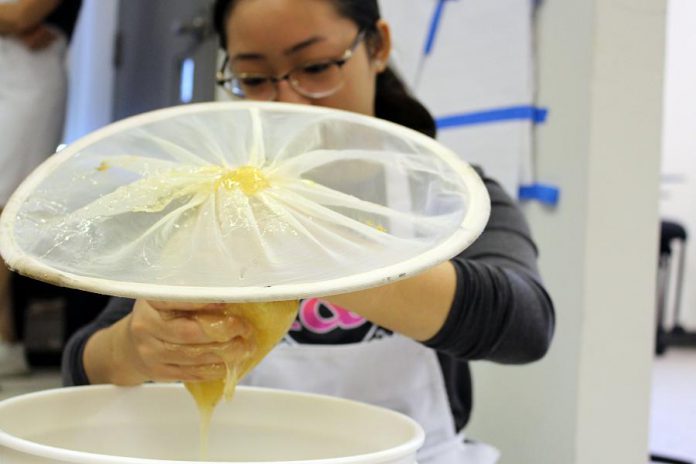
You may already know that the sweet, thick liquid that you enjoy in your afternoon tea is the food bees make after foraging nectar from flowers. But did you know that nectar is converted to honey when the bee regurgitates the liquid and stores it in honeycombs inside the beehive? That’s right, honey is actually evaporated bee vomit.
Bees ingest and regurgitate the nectar many times until it is high enough in sugars to be stored as their food source. They continue to fan the honey in the honeycombs with their wings to continually evaporate more water from the liquid, which prevents fermentation. The bees then cap the cells with two layers of beeswax to seal them with honey for consuming later.
The process of extracting the honey from the hives involves removing the honeycomb frames from the hive, unsealing the capped honey cells, placing the frames in a honey extractor, which removes the honey using centrifugal force, and then using a series of sieves and filters to remove impurities.
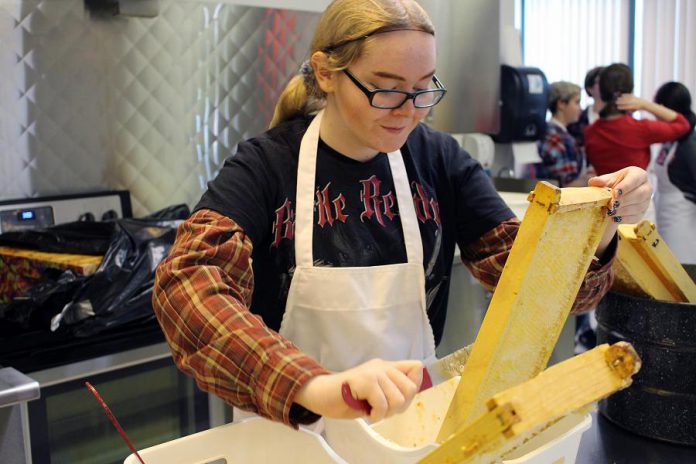
It takes 12 bees their entire lives to make only one teaspoon of honey, which is something to really appreciate the next time you drizzle that teaspoon onto your breakfast toast.
The colour and taste of honey will differ depending on the source of nectar or the species of flowers in bloom in the vicinity around the hive. Each flower has its own unique nectar and flavour that is reflected in the taste of the honey.
Growing and blooming seasons will also determine the taste of honey. For example, clover honey is light in colour and mild in flavor whereas buckwheat honey is quite dark and strong tasting. When honey is collected after corresponding growing seasons, different flavours and types of honey can be separated and packaged. In Ontario, many interesting honeys are available including blueberry, lavender, and goldenrod.
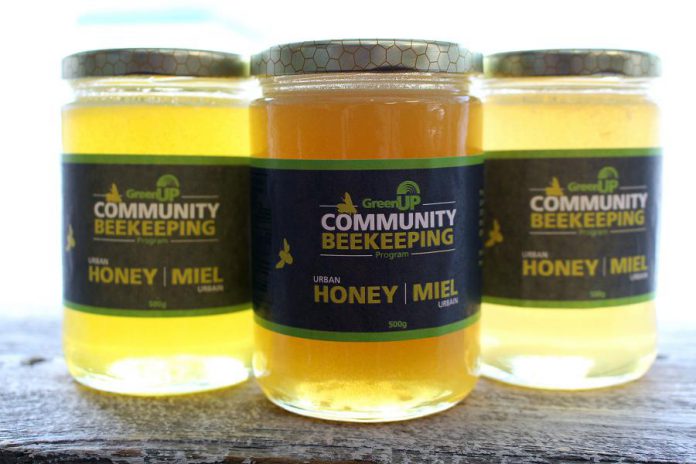
“Helping the students at the Holy Cross hives and showing them how to extract honey, along with talking to people in the community who come to see the hives throughout the summer, are ways for me to help others understand the importance of pollinators,” explains Day. “And I really do like the taste of honey!”
To learn more about the GreenUP Community Beekeeping program visit greenup.on.ca and to follow along with Holy Cross students’ experiential learning activities, follow them on Twitter at @HolyCrossPTBO






